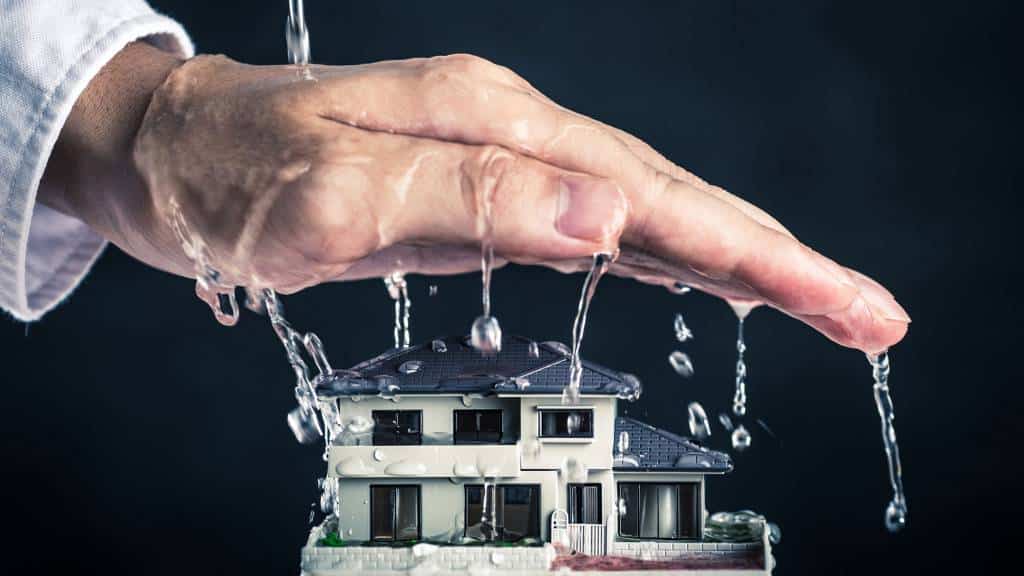The Residential Most Frequent Leak Triggers: Examination
The Residential Most Frequent Leak Triggers: Examination
Blog Article
Are you currently trying to find information and facts about Top Causes of Home Water Leaks?

Leakages not only create waste of water however can likewise create unnecessary damages to your home as well as advertise undesirable organic growth. Water leakages might go undetected because many of the pipework in our home is hidden. By looking and also comprehending for everyday scenarios that create leaks, you can shield your house from future leakages and unnecessary damages. Today, we will take a look at six leakage triggers that might be triggering your pipes to trickle.
Elbowing in roots
A lot of water leakages start outside your home as opposed to inside it. If you see an abrupt reduction in water pressure, state in your tap, take time to go out and also analyze your yard. You may observe wet patches or sinkholes in your backyard, which could suggest that tree origins are invading water lines creating water to leak out. You can have your plumber look for breach, especially if you have trees or hedges near your residential or commercial property.
Corroded water systems
As time goes by, your plumbing system ages as well as corrosion such as corrosion may begin gnawing the pipelines. This might be the source of staining or bending on your pipes. This asks for an evaluation with your plumber quickly. Take into consideration changing the pipelines since they are at a greater risk of corrosion than the newer versions if our plumbing system is old.
Malfunctioning Pipeline Joints
Pipe joints can deteriorate over time, resulting in water leakages. If you have loud pipelines that make ticking or banging noises, particularly when the hot water is turned on, your pipe joints are probably under a whole lot of stress.
Instant temperature level modifications.
Extreme temperature level modifications in our pipelines can cause them to expand and also get all of a sudden. This expansion and tightening may cause splits in the pipelines, specifically if the temperature are below freezing. If you maintained an eye on just how your plumbing works, it would certainly be best. The presence of the previously stated situations often suggests a high threat.
Poor Water Connectors
Sometimes, a leakage can be brought on by loose pipes as well as pipelines that supply your appliances. Most of the time, shifting is what creates the loosened water Links. You might discover in the case of a washing machine, a hose pipe may spring a leak because of trembling throughout the spin cycle. In case of a water connections leakage, you may notice water running straight from the supply line or puddles around your home appliances.
Clogged Drains
Obstructed drains pipes may be frustrating as well as inconveniencing, but they can often end up triggering an overflow resulting in break pipelines. Keep removing any type of materials that might decrease your drains pipes that can block them to avoid such inconveniences.
All the above are causes of leaks yet not all water leaks result from plumbing leakages; some leakages might come from roof covering leakages. All leaks ought to be fixed immediately to avoid water damage.
Leaks not only cause waste of water yet can also cause unnecessary damages to your residence and also advertise unwanted organic growth. By comprehending and also looking for everyday situations that trigger leakages, you can protect your house from future leaks and also unnecessary damages. Today, we will look at six leak triggers that might be causing your pipelines to trickle.
At times, a leak can be triggered by loose hose pipes and also pipelines that provide your appliances. In case of a water connections leak, you might notice water running directly from the supply line or puddles around your appliances.
How To Check For Water Leak In Your Home
How To Check for Leaks
The average household's leaks can account for nearly 10,000 gallons of water wasted every year and ten percent of homes have leaks that waste 90 gallons or more per day. Common types of leaks found in the home are worn toilet flappers, dripping faucets, and other leaking valves. These types of leaks are often easy to fix, requiring only a few tools and hardware that can pay for themselves in water savings. Fixing easily corrected household water leaks can save homeowners about 10 percent on their water bills.
To check for leaks in your home, you first need to determine whether you're wasting water and then identify the source of the leak. Here are some tips for finding leaks:
Take a look at your water usage during a colder month, such as January or February. If a family of four exceeds 12,000 gallons per month, there are serious leaks.
Check your water meter before and after a two-hour period when no water is being used. If the meter changes at all, you probably have a leak.
Identify toilet leaks by placing a drop of food coloring in the toilet tank. If any color shows up in the bowl after 10 minutes, you have a leak. (Be sure to flush immediately after the experiment to avoid staining the tank.)
Examine faucet gaskets and pipe fittings for any water on the outside of the pipe to check for surface leaks.
Undetected water leaks can happen without the home or business owner even realizing. If you suspect a water leak, but not able to find the source. It is time to contact a professional water leak detection service, The Leak Doctor.
How To Find a Water Leak In Your Home
https://www.leakdoctor.com/blog/How-To-Check-For-Water-Leak-In-Your-Home_AE197.html

As a devoted person who reads about How to detect water leaks in your home, I imagined sharing that section was a good thing. So long as you enjoyed reading our blog entry kindly do not forget to pass it around. I appreciate reading our article about Most Common Causes of Leaky Pipes.
Visit My Website Report this page